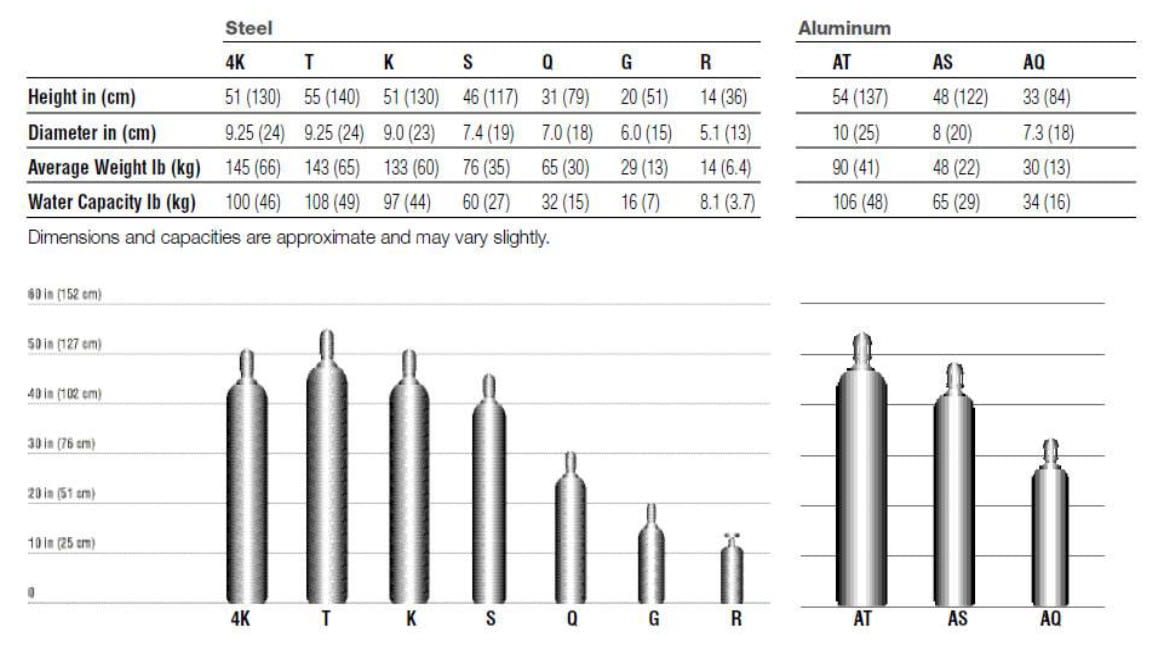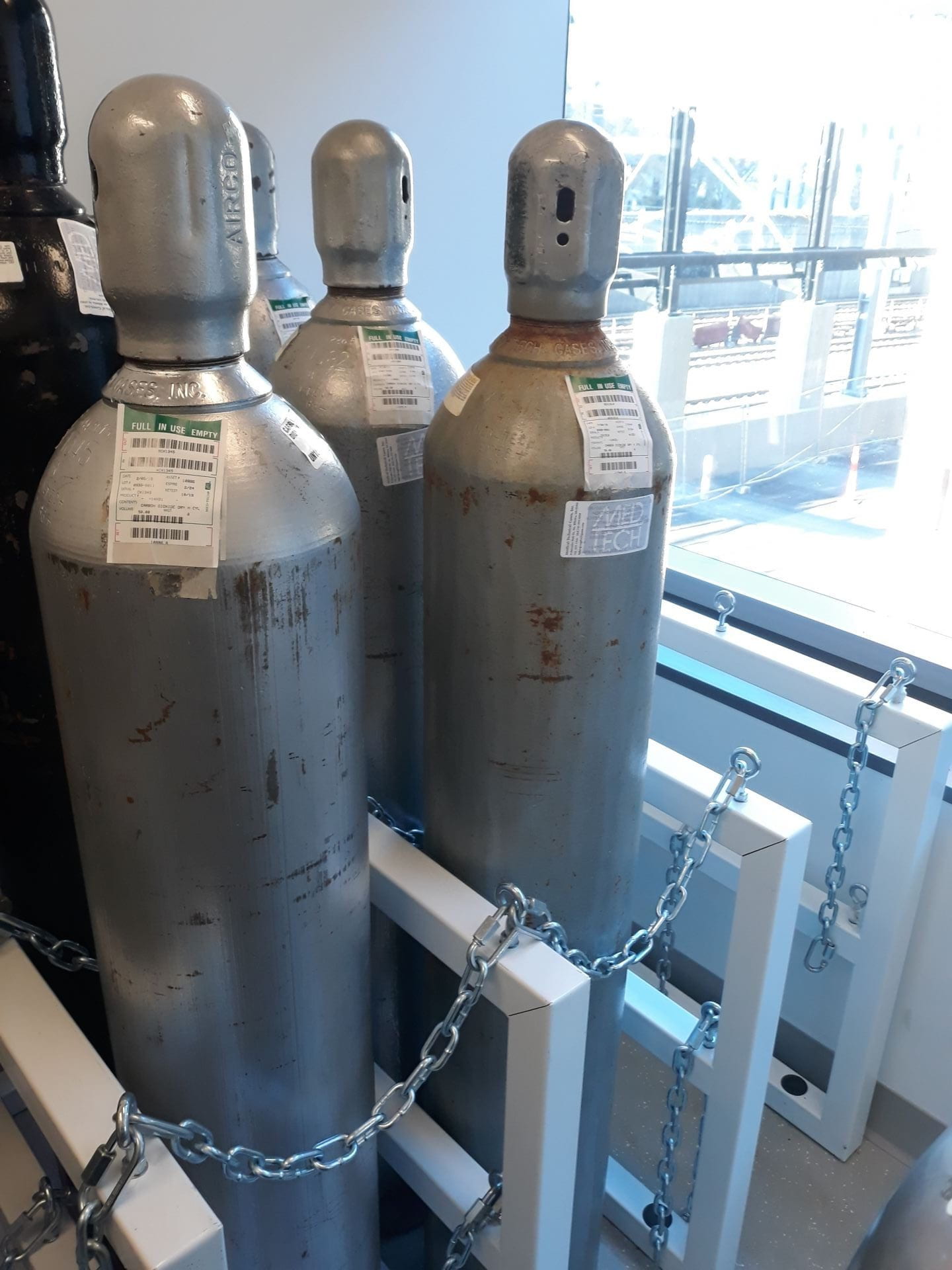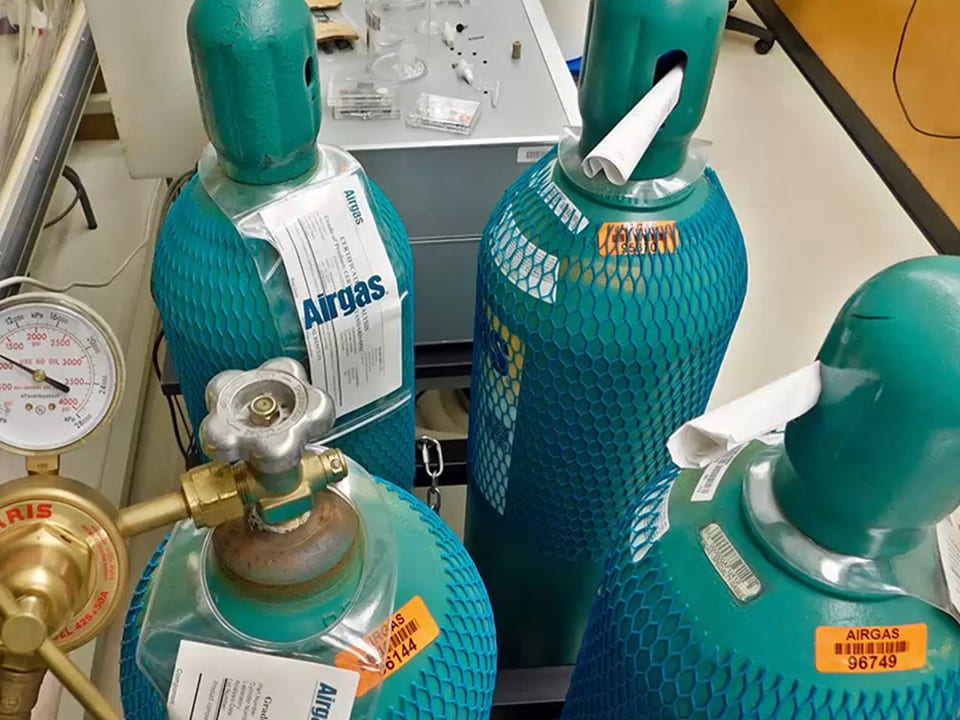Compressed Gas Safety
Guidelines
Securing the Cylinders:
- A minimum of 1 strap or chain (1/4” diameter) must be fastened around the cylinder above the center of gravity, which is about 2/3 of the way up.
- Cylinders must be secured at all times.
- Do not use wire, rope, or a frayed strap.
- The strap or chain must be secured to a bracket, mounted either on a wall or a lab bench.
- Cylinders should be secured vertically, unless they are on a cart specifically designed for horizontal storage.


Storage
- Store gas names prominently.
- Toxic gases (Health rating 3 or 4) should be locked, accessible by authorized personnel.
- Store in a well-ventilated area, as most gasses can be asphyxiants.
- Cylinders with valve caps should be stored with the cap securely on.
- Vales should be CLOSED on all cylinders when not in use.
- Store cylinders away from flammable or combustible liquids.
- Store cylinders away from corrosive chemicals or fumes.
- If stored outside, protect the cylinder bottom from the ground.
- Storage temperature must not exceed 125degrees.
- Cylinder must be labeled as “full”, “in use” or “empty”.
- Door sign on must state that compressed gas is being used.
Transport
- Transported only on specifically designed hand trucks.
- Cylinders must never be dragged, rolled, or lifted by the cap.
- Do not allow cylinders to be transported while touching each other, or close enough to strike each other.
- Always secure cylinders in a container when lifting with a crane or truck, do not use electromagnets, or ropes.
- When transporting using a hand truck, only transport one cylinder at a time.
- Store gas names prominently.
Cylinder Regulators and Valves
Cylinders, valves, caps, and brackets must all be regularly inspected for damage or corrosion. If any problems are found, please report them immediately
- Never use a compressed gas cylinder without a regulator.
- Only use connectors for the gas and pressure they are designed for (ex, flammable connectors are reverse threaded).
- Ensure that valves are always accessible.
- Always use safety glasses, and open valves slowly.
- Do not tamper with or attempt to fix cylinders, valves, or regulators.
- Never use a hammer or wrench to force a valve open.
- Avoid using plastic tubing for gas as it can leak.
Regulator Installation (Video)
From our colleagues at Northwestern University.

Resources
Gas Cylinder Safety Training
Coverage of Gas Cylinder Safety can be found in the following OARS courses:
-
Fundamentals of Laboratory Safety contains a segment.
-
Our Laboratory Safety Refresher contains a module on Gas Cylinder Safety.
Poster/Tool
Tool to Manage your Cylinder Inventory
Factsheet
Management of Empty Gas Cylinders
Contact Lab Safety
Email: labsafety@northeastern.edu
Phone: 617.373.2769
